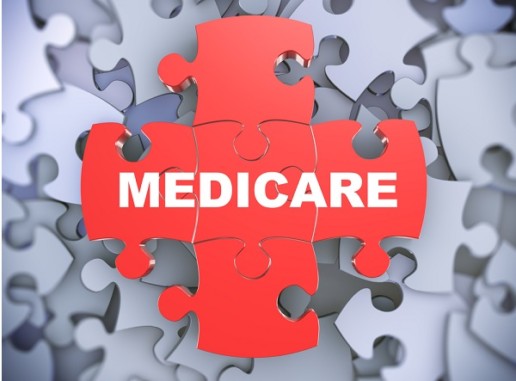Guidance Clarifies COVID-19 Diagnostic Testing Mandate
As many know, on March 18, 2020, the president had signed the Families First Coronavirus Response Act (FFCRA), which ultimately includes a requirement that health plans cover COVID-19 testing. Read this blog post for frequently asked questions and their answers provided from SHRM.
The Departments of Labor, Health & Human Services, and the Treasury recently issued a set of frequently asked questions (FAQs) that provide guidance to group health plan sponsors on various issues related to implementation of the COVID-19 diagnostic testing mandate.
Background
On March 18, 2020, the president signed the Families First Coronavirus Response Act (FFCRA), which includes a requirement for group health plans to cover COVID-19 diagnostic testing—including the cost of office, urgent care, ER and telehealth visits in order to receive testing—without cost-sharing or prior authorization. The following week, he signed the Coronavirus Aid, Relief, and Economic Security Act (CARES Act), which expands the COVID-19 diagnostic testing mandate provisions.
Departments' FAQs
The Departments of Labor, Health & Human Services, and the Treasury (the departments) issued a set of FAQs on April 11 that provide guidance to group health plan sponsors on various issues related to the implementation of COVID-19 diagnostic testing requirements. The departments anticipate releasing additional guidance in the future.
The FAQs address the following issues.
Which group health plans are subject to the mandate?
Most group health plans are subject to the mandate. This includes grandfathered plans under the Affordable Care Act, non-federal governmental plans, and church plans. The mandate does not apply to retiree-only plans or to excepted benefits, such as dental, vision, and most EAPs.
When are plans first required to comply and for how long?
Plans are required to cover items and services relating to COVID-19 diagnostic testing that were furnished on and after March 18, 2020, and to continue to do so through the end of the public health emergency. Unless extended or terminated earlier, the public health emergency related to COVID-19 will end on June 16, 2020.
What types of testing must be covered?
The guidance clarifies that in addition to tests that determine whether an individual has the virus based on the presence of COVID-19 virus genetic material in the body, a group health plan must also cover serological testing to detect COVID-19 antibodies. All tests must be either: (1) authorized by the Food and Drug Administration (FDA), (2) under review by the FDA, (3) developed and authorized by a state, or (4) determined appropriate by the Secretary of Health & Human Services.
What items and services must be covered in full during a visit?
Health plans "must cover items and services furnished to an individual, during visits that result in an order for, or administration of, a COVID-19 diagnostic test." The FAQs clarify that if the attending provider determines that other tests, such as influenza or blood tests, should be performed during a visit to help determine whether COVID-19 diagnostic testing should be conducted, "and the visit results in an order for, or administration of, COVID-19 diagnostic testing," the plan must cover those services in full.
If COVID-19 diagnostic testing is not ordered or administered as a result of the visit, full coverage for these services is not required.
Can a plan impose any cost-sharing, prior authorization, or medical management requirements for COVID-19 testing?
No.
Does the requirement to cover COVID-19 diagnostic testing without cost-sharing apply to out-of-network providers?
Yes. This requirement applies to out-of-network providers, including HMOs that otherwise do not cover non-emergency out-of-network services. Out-of-network providers would be reimbursed based on the cash price listed by the provider on a public website or the amount negotiated by the plan with the provider.
Under what circumstances are services considered to be furnished during a visit?
The FFCRA requires plans to cover COVID-19 diagnostic testing services during office visits including in-person and telehealth visits, as well as urgent care centers and emergency rooms. The guidance defines the term "visit" broadly "to include both traditional and non-traditional care settings in which a COVID-19 diagnostic test … is ordered or administered."
While the guidance does not require group health plans to include a benefit with a telehealth provider, any services offered by a provider through a telehealth visit or other remote visit for COVID-19 diagnostic testing must be covered in full.
What participant communication requirements apply?
The ACA requires group health plans to provide participants with at least 60 days' advance notice of a material modification to information contained in a Summary of Benefits and Coverage (SBC). The FAQ states that the departments will not enforce this advance notice requirement to the enhanced coverage of items or services related to the diagnosis or treatment of COVID-19. The non-enforcement policy will also apply to the addition or expansion of telehealth and other remote care services. However, plans "must provide notice of the changes as soon as reasonably practical." The guidance notes that the departments would continue to take enforcement action against a plan that attempts to offset the cost of the COVID-19 diagnostic testing requirement by eliminating or limiting benefits or increasing cost-sharing on other services.
The non-enforcement policy applies during the public health emergency period. If the benefit changes are continued beyond the public health emergency period, then plans will be required to update plan documents and terms of coverage.
Employers should communicate the coverage changes to participants as soon as possible. Using updated SBCs for this communication is an option for employers, but not required.
What about SMMs?
Unlike the SBC requirements, unless there is a material reduction in benefits, a group health plan does not have to issue a statement of material modification (SMM) for a change until 210 days after the close of the plan year in which the change was adopted. Nevertheless, sponsors may want to consider providing notice of the changes in the form of an SMM.
Can an employer offer benefits for COVID-19 diagnostic testing under an EAP or onsite medical clinic that constitute an excepted benefit without impacting its excepted benefit status?
Yes, diagnostic testing coverage can be provided without impacting the excepted benefit status of the EAP or onsite medical clinic.
While the guidance strongly encourages plan sponsors to promote the use of telehealth services, similar relief was not provided for telehealth benefits. Some employers are considering offering a standalone telehealth benefit to employees who are not eligible for medical coverage, or who have waived coverage. However, a standalone telehealth benefit would not satisfy the ACA market reform requirements unless it qualifies as an excepted benefit.
Use of onsite medical clinics to provide testing could be part of an employer's return-to-work program.
In Closing
The FAQs provide important guidance for employers on implementation of the diagnostic testing requirements and include actions employers need to take to communicate these provisions to employees.
Richard Stover, FSA, MAAA, is a principal at HR advisory firm Buck. Leslye Laderman, JD, LLM, is a principal in the firm's Knowledge Resource Center. This article originally appeared in the April 15, 2020 issue of Buck's For Your Information. © 2020 Buck Global LLC. All rights reserved. Republished with permission.
SOURCE: Stover, R.; Laderman, L. (21 April 2020) "Guidance Clarifies COVID-19 Diagnostic Testing Mandate" (Web Blog Post). Retrieved from https://www.shrm.org/resourcesandtools/hr-topics/benefits/pages/guidance-clarifies-coronavirus-diagnostic-testing-mandate.aspx
Supreme Court to Rule Next Year on the ACA's Validity
With the Affordable Care Act (ACA) being questioned on whether it is in-whole or in-part constitutional, the U.S. Supreme Court has decided to rule on this matter again. The ruling regarding the validity of the ACA is expected by June of 2021. Continue reading this blog post to learn more.
The U.S. Supreme Court will again rule on whether the Affordable Care Act (ACA) is constitutional, in whole or in part, during its term beginning this October, the court announced on March 2. A ruling is expected before the term ends in June next year.
In 2019, Congress eliminated the ACA's penalty on individuals who lack health coverage—the so-called individual mandate. In the aftermath, several Republican state attorneys general filed a lawsuit claiming the ACA itself was no longer constitutional, while Democratic states and the House of Representatives, controlled by Democrats, stepped in to defend the statute.
Back in 2012, the U.S. Supreme Court upheld the constitutionality of the ACA's individual mandate as a justifiable exercise of Congress's power to tax. But without an existing tax penalty, ACA critics charge that the health care statute itself, or at least the parts of the act closely linked to the individual mandate, are no longer constitutionally valid.
In December 2018, a Texas district court struck down the ACA but stayed its ruling pending appeal, concluding that the individual mandate is so connected to the law that Congress would not have passed the ACA without it. On appeal, in Texas v. United States, a split panel of the 5th Circuit instructed the district court to rehear the matter and "to employ a finer-toothed comb on remand and conduct a more searching inquiry into which provisions of the ACA Congress intended to be inseverable from the individual mandate."
Now that the Supreme Court has agreed to hear the case, it will not go back to the district court judge for that analysis, leaving the high court free to uphold the entire ACA, uphold the statute but void provisions linked to the individual mandate, or strike down the law in full, although that draconian option is viewed as exceedingly unlikely by legal analysts. The same five justices that upheld the ACA in 2012 remain on the court.
The health law remains fully in effect during the litigation, including all employer coverage obligations and reporting requirements.
The Supreme Court's Packed Schedule
The Supreme Court has placed five cases—including Texas v. United States—on the 2020 docket. This suggests that the hearing could be held in early or mid-October 2020, right before the 2020 election, although we may not know the oral argument schedule until later this spring or summer. In any event, a decision in Texas v. United States would not be expected until 2021 (and presumably not until June 2021).
It is worth noting that the Court will hear a separate ACA-related challenge on the final day of oral argument during its current term. On April 29, 2020, the Court will hear one hour of oral argument in the consolidated cases of Little Sisters of the Poor v. Pennsylvania and Trump v. Pennsylvania. These cases focus on the validity of two Trump-era rules that created broad exemptions to the ACA's contraceptive mandate for religious or moral reasons. And we are still waiting on a decision from the Court over whether insurers are owed more than $12 billion in unpaid risk corridor payments; oral argument was held in that challenge in December 2019 and a decision could be issued at any time.
(Health Affairs)
Lawsuit Stoked Confusion
America's Health Insurance Plans (AHIP), the insurance industry's leading lobbying group, applauded the justices' decision to hear the lawsuit. "We are confident that the Supreme Court will agree that the district court's original decision to invalidate the entire ACA was misguided and wrong," said AHIP President Matt Eyles in a statement.
Association for Community Affiliated Plans (ACAP), a group that represents more than 70 safety-net plans, noted that the lawsuit "has cast a pall of uncertainty over the future of the individual insurance market," according to ACAP CEO Margaret A. Murray.
(Fierce Healthcare)
5th Circuit Highlighted Suspect ACA Provisions
When the 5th Circuit instructed the district court to rehear the matter and to focus on those ACA provisions that Congress intended to be "inseverable from the individual mandate," this suggested, legal analysts said, that the appellate court was unlikely to overturn the ACA in full. However, the appellate court might have struck down those parts of the law directly related to the individual mandate, such as the 5:1 ratio age band, under which insurers can't charge seniors premiums more than five times what younger patients pay, and community rating, which prevents insurers from varying premiums within a geographic area based on age, gender, health status or other factors.
The increase in revenue to insurers from the individual mandate was meant to offset the decrease from these restrictions. It's unclear whether the U.S. Supreme Court will take a similar approach when it hears the case.
(SHRM Online)
SOURCE: Miller, S. (03 March 2020) "Supreme Court to Rule Next Year on the ACA's Validity" (Web Blog Post). Retrieved from https://www.shrm.org/ResourcesAndTools/hr-topics/benefits/Pages/supreme-court-to-rule-next-year-on-CAs-validity.aspx
What employers need to know to combat coronavirus
As the coronavirus is a trending topic of discussion, it is important for employers to keep their employees safe regarding any illness. Having set protocols and preventative guidelines set in place could keep symptoms from spreading. Continue reading this blog post to learn more about the importance of protocols around this flu season.
The coronavirus is continuing to spread rapidly, spurring employers such as Starbucks and PwC to implement workplace practices that protect their employees and offset growing fear and anxiety over the outbreak.
Since December, over 28,000 cases of coronavirus have been reported, and 565 people have died in China, which is at the epicenter of the outbreak. The disease has currently spread to 28 countries. In the U.S., there have been 293 cases reported and 11 people have tested positive for the virus in five states, according to the Centers for Disease Control and Prevention.
“There is a tension we’re seeing between being cautious and panicky,” says Joseph Deng, an employment law partner at Baker McKenzie law firm. “Companies want to communicate in a way that reassures the employee population while taking reasonable measures to protect employees.”
Employers like Facebook, Starbucks and WeWork, among others, have enacted a variety of preventative measures to handle the spread of the outbreak, including closing office locations in China and asking employees to self-quarantine in their homes for up to three weeks. Companies including accounting giant PwC and LG have placed mandatory travel bans to and from China.
“We are confident that the disease can be contained if everyone — including corporations doing business in China — is prudent and makes the safety of their employees their number one priority,” LG said in a statement.
Because of the changing nature of the pandemic and the speed in which it’s spreading, employers need to have essential protocols in place to protect employees and avoid misinformation. Often, employers feel unprepared but typically already have a blueprint for other disasters, Deng says.
“If you don’t have a pandemic policy, you as an employer will very likely have analogous policies that can be used in this situation,” Deng says. “When planning for this scenario, you need to ask what are the objective facts and what are your options.”
A critical first step to carrying out proper protocol is establishing a senior-level point person who can gather information, communicate across teams and report to upper management to implement the plan if necessary.
“You have to have someone who has the right touch and that can be subjective,” Deng says. “Find a person now who is the most knowledgeable and has the time and resources to gather information, assemble a cross functional team, and has access to a decision-making authority.”
Additionally, workplaces should focus on basic disease prevention measures, like promoting proper hygiene and encouraging workers to stay home if they’re not feeling well.
“If you feel you have symptoms, make prudent decisions. Do not travel or go into the workplace where you could spread the illness,” says Kathleen O’Driscoll, vice president of the Business Group on Health.
Taking these smaller, preventative measures early on will prepare both the employer and the employee in the event more extreme measures need to be taken. A more measured approach will make employees feel confident and protected.
“Think about how you want to be seen by your employees when this is over. You don’t want your employees to say, they didn’t tell me what to do or I had no support,” Deng says. “You’re not just preparing for an emergency. You’re working on how to come out with a better, stronger and more resilient workforce.”
SOURCE: Place, A. (06 February 2020) "What employers need to know to combat coronavirus" (Web Blog Post). Retrieved from https://www.benefitnews.com/news/what-employers-need-to-know-to-combat-coronavirus
Reminder: Medicare Part D Notices Are Due to CMS by Feb. 29
The federal Centers for Medicare & Medicaid Services (CMS) require disclosures regarding coverage that is either "creditable" or "non-creditable" each calendar year. The notice and disclosure deadline for those who provide prescription drug coverage is due February 29, 2020. Read this blog post to learn more about the Medicare Part D notice.
Each year, group health plan sponsors that provide prescription drug coverage to individuals eligible for Medicare Part D must disclose to the federal Centers for Medicare & Medicaid Services (CMS) whether that coverage is "creditable" or "non-creditable." Prescription drug coverage is "creditable" when it is at least actuarially equivalent to Medicare Part D prescription drug coverage.
The disclosure obligation applies to all plan sponsors that provide prescription drug coverage, even those that offer prescription drug coverage only to active employees and not to retirees. Calendar year plans must submit this year's disclosure by Feb. 29, 2020.
Background
Individuals who fail to enroll in Medicare Part D prescription drug coverage when first eligible may be subject to late enrollment penalties if they go 63 consecutive days or longer without creditable prescription drug coverage. Because of this potential penalty, both Medicare Part D-eligible individuals and the CMS need to know whether a group health plan's prescription drug coverage is creditable or non-creditable.
Plan sponsors that provide prescription drug coverage must furnish Part D-eligible individuals with a notice disclosing the creditable or non-creditable status of their coverage before the beginning of the Medicare Part D annual enrollment period and at certain other times.
Plan sponsors must also disclose to CMS, on an annual basis and at certain other times, whether the coverage they provide is creditable or non-creditable. The submission deadline for this year's disclosure to CMS by calendar year plans is approaching.
Creditable Coverage Disclosures to CMS
Plan sponsors generally must disclose creditable coverage status to CMS within 60 days after the beginning of each plan year. Disclosure is made using the Disclosure to CMS Form on the CMS website. An entity that does not offer outpatient prescription drug benefits to any Part D-eligible individual on the first day of its plan year is not required to complete the CMS disclosure form for that plan year. Plan sponsors that contract directly with Medicare as a Part D plan or that contract with a Part D plan to provide qualified prescription drug coverage are also exempt from the CMS disclosure requirement for individuals who participate in the Part D plan.
In addition to the annual disclosure, plan sponsors must submit a new disclosure form to CMS within 30 days following any change in the creditable coverage status of a prescription drug plan. This includes both a change in the coverage offered so that it is no longer creditable (or non-creditable) and the termination of a creditable coverage option. A new disclosure form must also be submitted to CMS within 30 days after the termination of a prescription drug plan.
The disclosure requirement applies to all plan sponsors that provide prescription drug coverage to Part D-eligible individuals, even those that do not make prescription drug coverage available to retirees.
Calendar year plans must submit this year's disclosure to CMS by Feb. 29, 2020.
| Is disclosure required If an employer doesn't offer retiree coverage? | ||
| All Part D-eligible individuals covered under an employer's prescription drug plan — regardless of whether the coverage is primary or secondary to Medicare Part D — should be included in the disclosure. "Part D-eligible individuals" are generally age 65 and older or under age 65 and disabled, and include active employees and their dependents, COBRA participants and their dependents, and retirees and their dependents. Even employers without retiree coverage may need to file the disclosure. |
Information Needed to Complete Disclosure
In preparing the disclosure to CMS, plan sponsors need to:
- Identify the number of prescription drug options offered to Medicare-eligible individuals. This is the total number of benefit options offered, excluding any benefit options the plan sponsor is claiming under the retiree drug subsidy (RDS) program (i.e., benefit options for which the plan sponsor is expected to collect the subsidy) or that are employer group waiver plans (EGWPs).
For example, a plan sponsor with a PPO and an indemnity option covering actives and an option for retirees for which it is receiving RDS would report two prescription drug options. - Determine the number of benefit options offered that are creditable coverage and the number that are non‑creditable.
- Estimate the total number of Part D-eligible individuals expected to have coverage under the plan at the start of the plan year (or, if both creditable and non-creditable coverage options are offered, estimate the total number of Part D-eligible individuals expected to enroll in each coverage category). This includes Part D-eligible active employees, retirees, and disabled individuals and any of their Part D-eligible dependents and any individuals on COBRA who are Part D eligible.
The estimate should not include any Part D-eligible retirees being claimed under the RDS program or retirees in an EGWP (because that coverage is Medicare Part D coverage).
Individuals who will become Part D eligible after the start of the plan year should not be included in the count for that year. However, they must be provided a notice of creditable or non-creditable coverage prior to their initial Part D enrollment period. - Provide the most recent calendar date on which the required notices of creditable or non-creditable coverage were provided.
| Why doesn't the disclosure requirement apply to EGWPs or retiree plans where employer is receiving RDS payments? | ||
| Employers that provide prescription drug coverage through a Medicare Part D employer group waiver plan are exempt from the disclosure requirement because an EGWP is Medicare Part D coverage.
An employer participating in the retiree drug subsidy program must have already certified to CMS that its drug coverage is creditable. |
In Closing
Plan sponsors should review the instructions carefully before completing the Disclosure to CMS Form to make sure that they have all necessary information, and calendar year plans should report the information by Feb. 29, 2020.
Richard Stover, FSA, MAAA, is a principal at HR advisory firm Buck. Leslye Laderman, JD, LLM, is a principal in the Knowledge Resource Center at Buck. This article originally appeared in the Feb. 5, 2020 issue of Buck's For Your Information. © 2020 Buck Global LLC. All rights reserved. Republished with permission.
SOURCE: Stover, R.; Laderman, L. (06 February 2020) "Reminder: Medicare Part D Notices Are Due to CMS by Feb. 29" (Web Blog Post). Retrieved from https://www.shrm.org/resourcesandtools/hr-topics/benefits/pages/reminder-medicare-part-d-notices-due-to-cms.aspx
Healthcare waste is costing billions — and employers aren’t doing anything about it
Providing your employees with healthcare insurance is expensive. A large chunk of healthcare costs is being wasted by the healthcare industry, according to a new survey. Read on to learn more.
Providing the workforce with healthcare coverage is expensive, but a new survey of 126 employers suggests a large chunk of that cost is being wasted by the healthcare industry on treatments patients don’t need.
The healthcare industry wastes $750 billion per year on unnecessary tests and treatments, according to a survey from the National Alliance of Healthcare Purchaser Coalitions and Benfield, a market research, strategy and communications consulting firm. Some 60% of employers don’t take steps to manage their healthcare plan’s wasteful spending, despite the fact that the same percentage of employers view it as a problem, the survey says.
“While waste has long been identified as a key concern and cost contributor, employers are operating blind and need to look at a more disciplined approach to address top drivers that influence waste,” says Michael Thompson, National Alliance president and CEO.

Employers are under the impression that prescription drugs are the culprit behind the spending waste, and they are, just not as much as other services. Around 54% of health spending waste is caused by unnecessary medical imaging tests, such as MRIs and X-rays, the survey says. Specialty drugs, unnecessary lab tests and specialists referrals are also major money pits.
However, the survey data isn’t suggesting these procedures and treatments shouldn’t be covered by employer health plans. The tests and treatments are potentially life-saving, they’re just used more than they should be. Sometimes previous test results can help with a current diagnosis, but medical staff don’t always check patient files before ordering new tests.
Most employers don’t monitor unnecessary healthcare spending. The 34% of employers who do rely entirely on their healthcare vendors to do it for them, trusting that it’s being taken care of.
“The idea of reducing waste in the healthcare system can be overwhelming,” says Laura Rudder Huff, senior consultant for Benfield. “While employers ask themselves: ‘Where to start?’ this is an issue where even small steps matter. Employers can begin by collecting data to identify where the inefficiencies are in their workforce and community and use assets such as vendors and organizations like coalitions to realize market improvements.”
The survey also recommends employers enlist the services of Choosing Wisely, an organization that counsels patients and employers on healthcare plans and medical treatments.
This article originally appeared in Employee Benefit Adviser.
SOURCE: Webster, K. (7 November 2018) "Healthcare waste is costing billions — and employers aren’t doing anything about it" (Web Blog Post). Retrieved from https://www.benefitnews.com/news/healthcare-waste-is-costing-billions-and-employers-arent-doing-anything-about-it
The approaching ACA premium tax moratorium – take 2
In 2010, Congress scheduled the 2014 Affordable Care Act premium tax. Then in 2015 Congress introduced a one-year moratorium on the premium tax that would take place in 2017. This past January, Congress placed another moratorium for the ACA premium tax in 2019. Continue reading to learn more.
In 2010, Congress scheduled the 2014 introduction of the Affordable Care Act premium tax (aka the health insurer fee). Then, via the PACE Act of October 2015, Congress placed a one-year moratorium on this 4% or so premium tax for calendar year 2017. You might recall our ensuing discussion a couple of years ago about how employers sponsoring fully insured medical, dental and/or vision plans could leverage this 2017 moratorium to their advantage.
See also: ACA: 4 things employers should focus on this fall
Meanwhile, did you notice back in January that Congress placed another moratorium on this tax, this time for 2019? To review:
- 2014-2016 – Tax applies
- 2017 – Under moratorium
- 2018 – Tax applies
- 2019 – Under moratorium
- 2020 – Tax scheduled to return
Fortunately, in moratorium years, fully insured medical, dental and vision premiums should be about 4% lower than they would have been otherwise, with these savings passed along proportionately by most employers to their plan participants.
Unfortunately, the budgetary challenge of this on-again-off-again Congressional approach is that when the tax returns, fully insured renewals naturally go up about 4% more than they would have otherwise. For example, an 8% premium increase becomes 12%.
See also: Proposals for Insurance Options That Don’t Comply with ACA Rules: Trade-offs In Cost and Regulation
Another complication occurs as employers annually compare the expected and maximum costs of self-funding their plans versus fully insuring the plans. Because this tax generally does not apply to self-funded plans, in “tax applies” years, any expected savings from self-funding will show about 4% higher than in moratorium years. This math especially complicates the financial comparison of level funding contracts to fully insured contracts (almost all level funding products are self-funded contracts).
With the Jan. 1 fully insured medical, dental and vision renewals beginning to cross our desks, what should employers do?
First, they should review the renewal’s rating methodology page and ensure that this tax was not included in the proposed 2019 premiums. If the rating methodology page was not provided, request it. If this request fails, ask for written confirmation that this tax is not included in your plan’s 2019 premiums.
Second, when comparing 2019 expected and maximum mature self-funded plan costs to 2019 fully insured premiums, extend the analysis to 2020 and project what will happen when this 4% fully insured tax tide returns.
See also: Pre-existing Conditions and Medical Underwriting in the Individual Insurance Market Prior to the ACA
Finally, complicating matters, several states, including Maryland, introduced new or higher state premium taxes for 2019. Ask your benefits consultant if these actions will impact your plans. For Maryland employers sponsoring fully insured plans, for example, the new additional one-year premium tax will essentially cancel out the 2019 ACA premium tax moratorium.
SOURCE: Pace, Z (27 September 2018) "The approaching ACA premium tax moratorium – take 2" (Web Blog Post). Retrieved from https://www.benefitnews.com/opinion/the-approaching-obamacare-premium-tax-moratorium?brief=00000152-14a5-d1cc-a5fa-7cff48fe0001
Medicare: Why an Advisor Makes All the Difference
Often those approaching Medicare eligibility are overwhelmed by the quantity of information available – and understandably so. As a form of insurance, Medicare is fundamentally different from other group/employer, individual, or family plans in that it is centered around the individual, yet any decisions made could potentially affect family members. In order to understand the costs, benefits, plans, and overall structure of Medicare, professional advice is strongly recommended when weighing options. That’s why, in this installation of CenterStage, Rob Glover, our Senior Solutions Advisor at Saxon, provided the following insightful information. Generally speaking, Medicare plans are explored during a significant lifestyle change. Having an insurance sales agent to facilitate retirement planning can help in adjusting Medicare options.

A Two-Way Relationship
Insurance agents are able to conform Medicare options around desired preferences and requirements. Each beneficiary is unique and therefore deserves a plan that delivers a standard of quality that is suited to varying budgets and ways of life. Agents can act as personal advisors and offer close collaboration when sifting through insurance plans. After becoming aware of defined healthcare coverage needs, Medicare advisors can narrow the search and find a solution that will safeguard both the individual and his or her family from looming financial damages.
It’s best to have a licensed agent with years of experience in Medicare. While textual knowledge is certainly important, learned wisdom is paramount in avoiding pitfalls throughout the process. Agents with real experience in the field are the best guides in navigating the processes, policies, and terminology of Medicare. Also, there are benefits in maintaining a relationship with them, since they are well-versed in the details of plans germane to the area. They are likely more familiar with supplier and provider networks and, using this knowledge, can provide guidance on which Medicare plan to choose.
The beneficiary-advisor relationship doesn’t end after the sale. In fact, they are often an advocate for many years after, offering consultations that address subsequent concerns with coverage. Medicare advisors can help review healthcare needs on a yearly basis to ensure the plan is lining up with changing criteria.
Services Worth Using
Independent advisors can offer many options across a multitude of carriers. Some agents are able to compare dozens of providers by contracting many different insurance companies. This method of contracting also aids in eliminating biases during plan research and comparison. The independent advisor can assist in making an informed decision on a Medicare insurance plan that is in line with the individual needs of the beneficiary. There aren’t any fees associated with merely utilizing an advisor. To elaborate, the rates linked to insurance plans already cover advisors’ commissions and thus render the decision on whether or not to employ one free from frugal urges. Therefore, there’s no reason not to seek the advice of a discerning sales agent to make the enrollment process easier. Licensed sales agents in the Medicare field take part in numerous hours of continued education and training annually. They are knowledgeable to pertinent information that could shape the decision-making process in addition to their understanding of a client’s defined parameters. Nevertheless, beneficiaries can only change insurance once within a year and can wind up “stuck” in a chosen plan unless the said beneficiary is eligible for a Special Enrollment Period. Regardless of position in the retirement process, time becomes increasingly more important. Utilizing an informed advisor will lead to time saved on plan comparison and research as they can help pinpoint a solution that fits the circumstances rather than waste time through trial and error. Licensed advisors are able to grant a one-stop shopping experience. Through innovative technology, they can access any and all relevant information at any time. Some create webinars regarding important issues, answer frequently asked questions, and elicit 24/7 assistance. Within some websites, beneficiaries can enroll in Medicare Advantage plans, request proposals, and research and compare options.
If you would like to learn more, contact Rob Glover at 513.703.7720 or rglover@gosaxon.com.
Top 10 health conditions costing employers the most
As healthcare costs continue to rise, employers continue to look for ways to target those costs. Read this blog post to learn more.
As healthcare costs continue to rise, more employers are looking at ways to target those costs. One step they are taking is looking at what health conditions are hitting their pocketbooks the hardest.
“About half of employers use disease management programs to help manage the costs of these very expensive chronic conditions,” says Julie Stich, associate vice president of content at the International Foundation of Employee Benefits Plans. “In addition, about three in five employers use health screenings and health risk assessments to help employees identify and monitor these conditions so that they can be managed more effectively. Early identification helps the employer and the employee.”
What conditions are costly for employers to cover? In IFEPB’s Workplace Wellness Trends 2017 Survey, more than 500 employers were asked to select the top three conditions impacting plan costs. The following 10 topped the list.
10. High-risk pregnancy
9. Smoking
8. High cholesterol
7. Depression/mental illness
6. Hypertension/high blood pressure
5. Heart disease
4. Arthritis/back/musculoskeletal
3. Obesity
2. Cancer (all kinds)
1. Diabetes
ACA: 4 things employers should focus on this fall
Yes, employers still need to worry about the Affordable Care Act and its many rules and regulations. Read this blog post for more information.
During the coming months, employers may have questions about whether they still need to worry about the Affordable Care Act (ACA). The answer is yes; the ACA is alive and well, despite renewed legal challenges and the elimination of the individual mandate beginning next year.
While the Tax Cuts and Jobs Act reduced the tax penalty for individuals who don’t have health coverage to $0, effective for 2019, employers are still subject to penalties for failing to comply with certain ACA rules. For example, the IRS is currently enforcing “employer shared responsibility payments” (ESRP) penalties against large employers who fail to meet the ACA requirements to offer qualifying health coverage to their full-time employees. For this purpose, large employers are those with 50 or more full-time or full-time equivalent employees. Here are four things about the ACA that employers should focus on now to avoid significant financial liabilities.
1. The IRS is currently assessing penalties using 226-J letters
In 2017, the IRS began assessing ESRP penalties against large employers that failed to offer qualifying health coverage to at least 95 percent of their full-time employees. An ESRP penalty assessment comes in the form of a 226-J letter, which explains that the employer may be liable for the penalty, based on information obtained by the IRS from Forms 1095-C filed by the employer for that coverage year, and tax returns filed by the employer’s employees. The employer has only 30 days to respond to the 226-J letter, using IRS Form 14764, which is enclosed with the 226-J letter. The employer must complete and return IRS Form 14765 to challenge any part of the assessment.
The short timeframe for responding to a 226-J letter means that staff who are likely to be the first to receive communications from the IRS should have a plan in place to react quickly. Training for staff should include information about who to notify and what documentation to keep readily available to support an appeal. Not responding to the IRS 226-J letter will result in a final assessment of the proposed penalty. These penalties can be significant. In the worst case, an employer with inadequate health coverage could pay for the cost of the coverage, as well as penalties of $2,000/year (as indexed) for every full time employee (less 30), even those who received health coverage from the employer.
Depending on the employer’s response to the initial assessment, the IRS will then send the employer one of four types of 227 acknowledgment letters. If the employer disputes the penalty, the IRS could accept the employer’s explanation and reduce the penalty to $0 (a 227-K letter). But if the IRS rejects any part of the employer’s response, the employer will receive either a 227-L letter, with a lower penalty amount, or a 227-M letter, a notice that the amount of the initial assessment hasn’t changed. These letters will explain steps the employer has to take to continue disputing the assessment, including applicable deadlines. The next phase of the appeal might include requesting a telephone conference or meeting with an IRS supervisor, or requesting a hearing with the IRS Office of Appeals.
2. ACA reporting requirements and penalties still apply
Along with the ESRP penalties, the Form 1094-C and 1095-C reporting requirements still apply to large employers. The IRS uses information on Forms 1095-C in applying the ESRP rules and deciding whether to assess penalties against the reporting employer. Large employers must file Forms 1095-C every year with the IRS and send them to full-time employees in order to document compliance with the ACA requirement to offer qualified, affordable coverage to at least 95 percent of full-time employees. Technically, the forms are due to employees by January 31, and to the IRS by March 31, each year, to report compliance for the prior year. In the past, the IRS has extended the deadline for providing the forms to employees, but not the deadline for filing with the IRS.
Penalties can apply if an employer fails to file with the IRS or provide the forms to employees, and the penalty amount can be doubled if the IRS determines that the employer intentionally disregarded the filing requirement. These penalties can apply if an employer fails to file or provide the forms at all, files and provides the forms late, or if the forms are timely filed and provided, but are incorrect or incomplete.
In some instances, the IRS has assessed ESRP penalties based on Form 1095-C reporting errors. So, in addition to the reporting-related penalties, inaccurate information on Forms 1095-C can lead to erroneous ESRP assessments that the employer will then need to refute, using the IRS forms and procedures described above.
Employers should carefully monitor their ACA filings and reports, and consider correcting prior forms if errors are discovered. Employers should also continue tracking offers of coverage made for each month of 2018, to prepare for compliance with the Form 1095-C reporting requirement early in 2019.
3. “Summary of Benefits and Coverage” disclosure forms are still required
The ACA added a new disclosure requirement for group health plans, called a “Summary of Benefits and Coverage” or “SBC,” that’s intended to help employees make an “apples to apples” comparison of different benefit plan features, such as deductibles, out-of-pocket maximums, and copayments for various benefits and services. This requirement still applies, and SBCs must be provided during open enrollment, upon an employee’s initial eligibility for coverage under the plan, and in response to a request from an employee. The template SBC form and instructions for completing it were updated for coverage periods starting after April 1, 2017. For 2018, a penalty of $1,128 per participant can apply to the failure to provide an SBC as required.
4. The “Cadillac Tax” has not been repealed
The ACA’s so-called Cadillac tax — an annual excise tax on high-cost health coverage — was initially scheduled to take effect in 2018. The Cadillac tax has been repeatedly delayed, and the federal budget bill passed in January delayed it again through December 31, 2021. Despite the repeated delays, the Cadillac tax has not been repealed and is currently scheduled to apply to health coverage offered on or after January 1, 2022. This might be an issue to consider for employers who are negotiating collective bargaining agreements in 2018 that include terms for health benefits extending beyond 2021.
While uncertainty continues to surround the ACA, employers should remain aware of continuing compliance requirements to avoid the potentially significant penalties that remain in effect under the ACA.
Boyette, J; Masson, L (21 August 2018) "ACA: 4 things employers should focus on this fall" (Web Blog Post). Retrieved from https://www.benefitspro.com/2018/08/21/aca-4-things-employers-should-focus-on-this-fall/
New rule pushes for hospital price transparency
The Centers for Medicare & Medicaid Services is pushing for a new rule that will force hospitals to provide patients with a list of the cost of all their charges. Continue reading to learn more.
The Centers for Medicare & Medicaid Services announced a proposed rule aimed at providing patients with a clear price listing of the cost of their hospital charges. In an effort to fulfill the proposed rule’s objective, CMS suggested an amendment to the requirements previously established by Section 2718(e) of the Affordable Care Act.
CMS issued the final rule (CMS-1694-F), which included the suggested amendment discussed in the April 24, 2018 proposed rule. Currently, under Section 2718(e), hospitals are given the option to either (i) make public a list of the hospital’s standard charges or (ii) implement policies for allowing the public to view a list of the hospital’s standard charges in response to an individual request.
Beginning January 1, 2019, however, hospitals will be required to make available a list of their current standard charges via the Internet in a machine readable format and to update this information at least annually, or more often as appropriate.
This could be in the form of the chargemaster itself of another form of the hospital’s choice, as long as the information is in machine readable format. CMS believes that this update will further promote price transparency by improving public accessibility of hospital charge information.
In the final rule, CMS explains that it is aware of the challenges that continue to exist because the chargemaster data may not accurately reflect what any given individual is likely to pay for a particular service or visit.
Additionally, the comments received in response to the proposed rule argue that the chargemaster data would not be useful to patients because it is confusing as to the amount of the actual out-of-pocket costs imposed on a particular patient.
CMS further explains that it is currently reviewing the concerns addressed in the comments, and is considering ways to further improve the accessibility and usability of the information disclosed by the hospitals.
SOURCE: Goldman, M; Grushkin, J; Fierro, C (16 August 2018) "New rule pushes for hospital price transparency" (Web Blog Post). Retrieved by https://www.employeebenefitadviser.com/opinion/cms-rule-pushes-for-hospital-price-transparency









